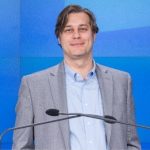Futures

HR futures: Bottom to prices?
Written by Spencer Johnson
July 12, 2024
A month ago, when we last presented this column, there was a surprising amount of optimism in the presumably imminent reversal of the downtrend in hot-rolled steel prices in the second half of 2024. We say “surprising” only because this is a momentum market and momentum has remained decidedly to the downside for essentially all US steel product pricing since as far back as January. ‘Picking the bottom’ is indeed a tantalizing prospect but there is a reason this is sometimes also called ‘catching the falling knife’ – reach too soon and it can be painful. And here we are a month later and still both things persist. The downtrend in spot continues to see prices falling to new lows below $670 per short ton (st) this week. But there also remains this persistent optimism that this is the bottom.
Optimism is, of course, relative. On June 3, August HRC futures were trading around $800/st. Now they are at $700/st, but despite a 12.5% drop in a month’s time that $700/ton August price is still a 5% premium to most spot price indices.
This makes it even more important to consider that as July futures have fallen as low as $665/st as of July 11, the premium for just two months forward from July to September is still ~$80/st at $745/st being the last traded September price as of the writing of this article. Go a little further to December and we add on another $70/st to $815/st last traded, making the total premium from July to December a healthy looking $150/st premium. This is the part where we remind readers that this is not a predictive mechanism. The futures are not a forecast pricing in the imminent reversal of fortune for steel pricing. If they were, I remind readers the market was paying a lot more for July and August steel futures a month ago, so if it were a predictive effort it would have been another rough month. No, the reversal in prices is a more cold and calculating reflection of market forces and, I think particularly, interest rates than some have assumed.
This is in part because as we all know, the steel industry benefited from a very long stretch of essentially zero cost money that allowed factors like borrowing costs to go neglected in the overall measure of inventory financing. That oversight has been corrected for years now and the forward premiums are reflective of that reality. The years of flattish and often dramatic backwardations have been more a legacy of low interest rates, or are they? Certainly if you look at spot vs. six-month futures in the last year, the market only slipped into discount briefly and this was a function of spot prices reaching over $1000/st in December. Those kinds of highs usually spark expectations of mean reversion unless there is strong fundamental rationale otherwise. A recession might be one such rationale, just speaking hypothetically, so while a higher interest rate environment will structurally continue to favor higher forward pricing, hedgers cannot ignore the still present risk that a major reversal in growth will make the current rate environment a poor measure for costs in even 9-12 months.
None of this changes the truth that the market IS still paying inventory carriers to hold steel today, and the number is about $150/st to hold it for 4-5 months here. Now the question will persist on whether that is attractive offer for service centers or not. If it is not attractive enough, it is not impossible to see a run to more of a $200/st premium in our mind, but as spot price weakness persists the willingness to carry for less may also increase.
Disclaimer: This material should be construed as market commentary and represents the opinions and viewpoints of the author, and does not reflect tailored advice associated with any specific account of the FCM Division of StoneX Financial Inc. (“SFI”) (NFA ID: 0476094) or StoneX Markets LLC (“SXM”) (NFA ID: 0449652). The information herein is not advice nor a recommendation to trade nor an offer to buy or sell any financial product or service. Additionally, this material should not be construed as research material. The trading of derivatives such as futures, options, and over-the-counter (OTC) products or “swaps” may not be suitable for all investors. Derivatives trading involves substantial risk of loss, and you should fully understand the risks prior to trading. Past results are not necessarily indicative of future results.
All references to and discussion of OTC products or swaps are made solely on behalf of SXM. All references to futures and options on futures trading are made solely on behalf of SFI. SXM products are intended to be traded only by individuals or firms who qualify under CFTC rules as an ‘Eligible Contract Participant’ (“ECP”) and who have been accepted as customers of SXM.
SFI and SXM are not responsible for any redistribution of this material by third parties, or any trading decisions taken by persons not intended to view this material. Information contained herein was obtained from sources believed to be reliable, but is not guaranteed as to its accuracy. Contact designated personnel from SFI or SXM for specific trading advice to meet your trading preferences.
Reproduction or use in any format without authorization is forbidden.

Spencer Johnson
Read more from Spencer JohnsonLatest in Futures

HR Futures: Plummeting open interest shows complacent buyers ignoring ’26 risk
A tour of the economy as it relates to hot-rolled coil futures.

HR Futures: Rangebound amid muted summer trade
Since the last writing of this article, CME hot-rolled coil (HRC) futures have been largely steady and lifeless, though there’s been some brief bouts of intraday volatility.

HR Futures: Market blues turn bearish
The cautious neutrality and summertime blues we discussed just a few weeks ago have evolved into something decidedly more bearish.

HR Futures: Curve switches gears
After a period of backwardation driven by headlines and CRU index anchoring, the CME HRC curve structure has undergone a notable shift.

HR Futures: Summer doldrums prevail
Not much to report on from the sleepy HRC futures market in the thick of the summer doldrums with trading volume nearly grinding to a halt.
